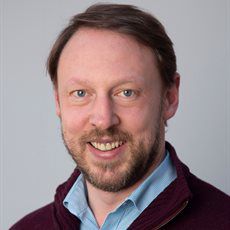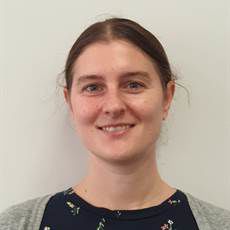Barendt Group: Mechanically interlocked molecules and materials
Overview
We develop new mechanically interlocked molecules such as rotaxanes and catenanes. The aim is to use their unique topology to control electronic communication and tune photophysical and electrochemical properties. The applications of these molecules include sensors, molecular machines and organic electronic materials.
Categories: Mechanically interlocked molecules
Chakrabarti Group: Topological soft matter
Overview
Our interest lies in exploiting the interplay between topologies of the ordering field of a liquid crystalline medium and the surface of the colloidal particles to design self-assembled liquid crystal colloids for attractive photonic properties. We are also interested in studying topological properties of open colloidal crystals, which are sparsely populated periodic structures.
Categories: Topological soft matter
Champness group: Topologically complex molecules and frameworks
There are no results that match your search
Overview
Research in the Champness group concerns the synthesis and characterisation of topologically complex molecules and frameworks, including interlocked molecules, rotaxanes and catenanes, and frameworks that exhibit complex topologies, such as self-entangled frameworks. In particular we are interested in how such molecular arrangements affect the properties of the resulting materials.
Categories: Interlocked Molecules
Davies group: Designing catalysis for molecular synthesis
Overview
Our interest in topologically interesting molecules and assemblies lies in (a) their use to develop and explore catalysts with new function and reactivity profiles, and (b) developing efficient new synthetic strategies to enable their synthesis and subsequent study.
Categories: Interlocked molecules; bio-molecules
Dove group: Sustainable polymer chemistry

Professor of Sustainable Polymer Chemistry
School of Chemistry
In September 2017, Andrew joined the School of Chemistry at the University of Birmingham as Professor of Chemistry. He leads the Dove Research Group, a multinational collection of vibrant and dynamic researchers that are focussed on challenges in polymer and materials science.
Professor Dove is part of the Birmingham Plastics Network, an interdisciplinary team of more than 40 academics working ...
- Email
- a.dove@bham.ac.uk
Overview
One of our key areas of focus is in the development of new sustainably sourced plastics that can degrade in the environment. A key aspect of achieving these goals relates to understanding how to topology of the polymer chains that form the plastic materials is both defined by the chemical structure of the polymer (and the chemistry by which that polymer is made) and in turn how that topology affects the materials properties and behaviour of the bulk material.
Categories: Polymers
Fossey group: Catalysis and sensing for health and sustainability
There are no results that match your search
Overview
We are interested in how the modulation of shape in 3D space manifests itself in the function and interactions of molecular-scale objects and materials, with an overarching aim being to deploy shape-based effects in synthesis and sensing for health and sustainability.
Categories: Molecular synthesis and healthcare materials
Hannon Group: Using supramolecular topology to control recognition of RNA structures and biological activity
Overview
We develop (supra)molecular nano-scale agents with complex topologies that combine for both helicity and interlocked structural features. We link these fundamental (synthesis and computational) studies of molecular topology with exciting applications in biology: Our helical nano-agents recognise specific DNA and RNA structures including junction structures and bulges through shape recognition and we can use the interlocked architectures to control and switch on/off this nucleic acid recognition.
Categories: Interlocked molecules, bio-molecules
Herten Group: Single molecule and 3D super-resolution microscopy

School of Chemistry
Chair in Cell Biology of Membrane Proteins
Department of Cardiovascular Sciences
- Email
- d.herten@bham.ac.uk
Overview
We have a strong interest in 3D super-resolution correlative light and electron microscopy to correlate structure function relationships on the molecular level in cellular samples. In a collaboration with Dr Steve Thomas (MDS, ICVS) we study the membrane topography in megakaryocytes and its relation to the cytoskeleton in the context of platelet formation.
Categories:Cellular membranes, cytoskeleton
Peacock group: Developing novel metallopeptides capable of function beyond the repertoire of biology
Overview
Miniature proteins based on the coiled coil motif, generated by supercoiling of helically folded peptides, are capable of generating metal binding sites exclusive to their folded state. Protein folding is therefore inextricably linked with function and can be tuned to access desirable properties and function. Target metals need not be limited to those routinely adopted by biology, thereby leading to new functional folded metallo peptides capable for applications beyond the repertoire of biology, such as in medical imaging.
Categories: Interlocked molecules and bio-molecules
Pike group: Synthetic helical oligomers - adopting biologically inspired topologies

UKRI Future Leaders Fellow
Birmingham Fellow
Associate Professor in Organic Chemistry
School of Chemistry
Dr Sarah Pike is a UKRI Future Leaders Fellow, a Birmingham Fellow and an Associate Professor in Chemistry.
Sarah’s research focuses on the design, synthesis and characterisation of novel supramolecular systems. A particular focus is on the development of supramolecular architectures for applications in sensing and small-molecule delivery.
Pike Group website
- Telephone
- +44 (0) 121 414 2989
- Email
- s.j.pike@bham.ac.uk
Overview
Synthetic helical oligomers possess a range of interesting physical properties and are capable of adopting biologically inspired topologies (i.e. folded helices). Through tuning the shape (and topology) of the helical oligomer it is possible to modify with great precision their physical properties (i.e. electrochemical or photochemical properties).
Categories: Topological materials, polymers/oligomers
Pikramenou group: Light emitting materials and metamaterials
Overview
Our interests are based on the properties of luminescent metals coupled with topologically controlled surfaces to lead to new materials for detection in diagnostic devices.
Categories: Topological materials, biomolecules
Tucker Group: Functional DNA Systems
Overview
The Tucker group studies functional DNA systems that respond to external stimuli such as light or redox processes. In topological science, we are interested in the manipulation of hybrid interlocked structures involving peptide components.
Categories: Interlocked molecules
Yeung Group: Interlocked molecules, bio-molecules
Overview
The Yeung group uses diffraction methods to investigate functional materials, such as metal–organic frameworks and hybrid inorganic–organic perovskites, for a variety of applications. Of particular interest is how the constituent building blocks assemble under different conditions to generate different phases, which may have a variety of topological and responsive properties.
Categories: metal–organic frameworks, X-ray diffraction